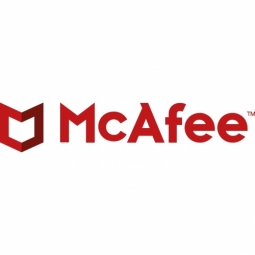公司规模
Large Corporate
地区
- America
- Europe
- Asia
国家
- Ireland
- United States
- Australia
- China
产品
- Skyhigh for Shadow IT
技术栈
- CloudTrust™ registry
- Cloud Policy Enforcement Analytics
- User behavior analytics
实施规模
- Enterprise-wide Deployment
影响指标
- Cost Savings
- Productivity Improvements
- Digital Expertise
技术
- 应用基础设施与中间件 - API 集成与管理
适用行业
- 药品
适用功能
- 离散制造
- 质量保证
用例
- 预测性维护
- 网络安全
服务
- 云规划/设计/实施服务
- 数据科学服务
关于客户
Perrigo 是全球五大制药公司之一,业务遍及北美、欧洲、澳大利亚、以色列和中国。该公司总部位于爱尔兰都柏林,年收入达 35 亿美元。作为一家拥有 8,500 多名员工的全球性组织,IT 必须掌控公司内外的信息流。随着云服务使用率的不断提高,彻底了解云的使用情况对于这项工作至关重要。
挑战
全球制药公司 Perrigo 的现有流程面临挑战,导致云安全策略实施不一致,并造成数据泄露风险。员工积压的云服务审批请求抑制了生产力。对正在使用的云服务提供商缺乏可见性,阻碍了主动云支持。该公司需要详细了解用户正在做什么,并能够为不同的业务部门提供策略控制。他们需要完全了解云的使用情况,主动阻止高风险服务,并增加对高风险行为异常的检测。
解决方案
为了应对这些挑战,Perrigo 实施了 Skyhigh for Shadow IT,这为他们提供了全面了解和保护云数据流所需的可见性和控制力。他们利用 Skyhigh 的 CloudTrust™ 注册表从基于类别阻止服务转变为基于风险阻止服务,该注册表使用与云安全联盟共同开发的框架,从 65 多个属性中得出详细的风险评分。Perrigo 还使用 Skyhigh 的 CloudTrust™ 注册表加速了用户请求的新服务的评估流程。通过利用 Skyhigh 的用户行为分析,Perrigo 能够识别用户行为中的异常,这些异常表明可能存在数据泄露事件或帐户被盗用。
运营影响
数量效益

Case Study missing?
Start adding your own!
Register with your work email and create a new case study profile for your business.
相关案例.

Case Study
Case Study: Pfizer
Pfizer’s high-performance computing software and systems for worldwide research and development support large-scale data analysis, research projects, clinical analytics, and modeling. Pfizer’s computing services are used across the spectrum of research and development efforts, from the deep biological understanding of disease to the design of safe, efficacious therapeutic agents.

Case Study
Fusion Middleware Integration on Cloud for Pharma Major
Customer wanted a real-time, seamless, cloud based integration between the existing on premise and cloud based application using SOA technology on Oracle Fusion Middleware Platform, a Contingent Worker Solution to collect, track, manage and report information for on-boarding, maintenance and off-boarding of contingent workers using a streamlined and Integrated business process, and streamlining of integration to the back-end systems and multiple SaaS applications.

Case Study
Process Control System Support
In many automated production facilities, changes are made to SIMATIC PCS 7 projects on a daily basis, with individual processes often optimised by multiple workers due to shift changes. Documentation is key here, as this keeps workers informed about why a change was made. Furthermore, SIMATIC PCS 7 installations are generally used in locations where documentation is required for audits and certification. The ability to track changes between two software projects is not only an invaluable aid during shift changes, but also when searching for errors or optimising a PCS 7 installation. Every change made to the system is labour-intensive and time-consuming. Moreover, there is also the risk that errors may occur. If a change is saved in the project, then the old version is lost unless a backup copy was created in advance. If no backup was created, it will no longer be possible to return to the previous state if and when programming errors occur. Each backup denotes a version used by the SIMATIC PCS 7 system to operate an installation. To correctly interpret a version, information is required on WHO changed WHAT, WHERE, WHEN and WHY: - Who created the version/who is responsible for the version? - Who released the version? - What was changed in the version i.e. in which block or module of the SIMATIC PCS 7 installation were the changes made? - When was the version created? Is this the latest version or is there a more recent version? - Why were the changes made to the version? If they are part of a regular maintenance cycle, then is the aim to fix an error or to improve production processes? - Is this particular version also the version currently being used in production? The fact that SIMATIC PCS 7 projects use extremely large quantities of data complicates the situation even further, and it can take a long time to load and save information as a result. Without a sustainable strategy for operating a SIMATIC PCS 7 installation, searching for the right software version can become extremely time-consuming and the installation may run inefficiently as a result.

Case Study
ELI LILLY ADOPTS MICROMEDIA’S ALERT NOTIFICATION SYSTEM
Pharmaceutical production is subject to a strict set of enforced rules that must be adhered to and compliance to these standards is critically necessary. Due to the efforts of WIN 911’s strategic partner Micromedia, Lilly was able to adopt an alarm notification infrastructure that integrated smoothly with their existing workflows and emergency hardware and protocols. These raw energy sources enable the industrial process to function: electricity, WIN-911 Software | 4020 South Industrial Drive, Suite 120 | Austin, TX 78744 USA industrial steam, iced water, air mixtures of varying quality. Refrigeration towers, boilers and wastewater are monitored by ALERT. Eli Lilly identified 15000 potential variables, but limitations compelled them to chisel the variable list down to 300. This allowed all major alarms to be covered including pressure, discharge, quantity of waste water discharged,temperature, carbon dioxide content, oxygen & sulphur content, and the water’s pH.









